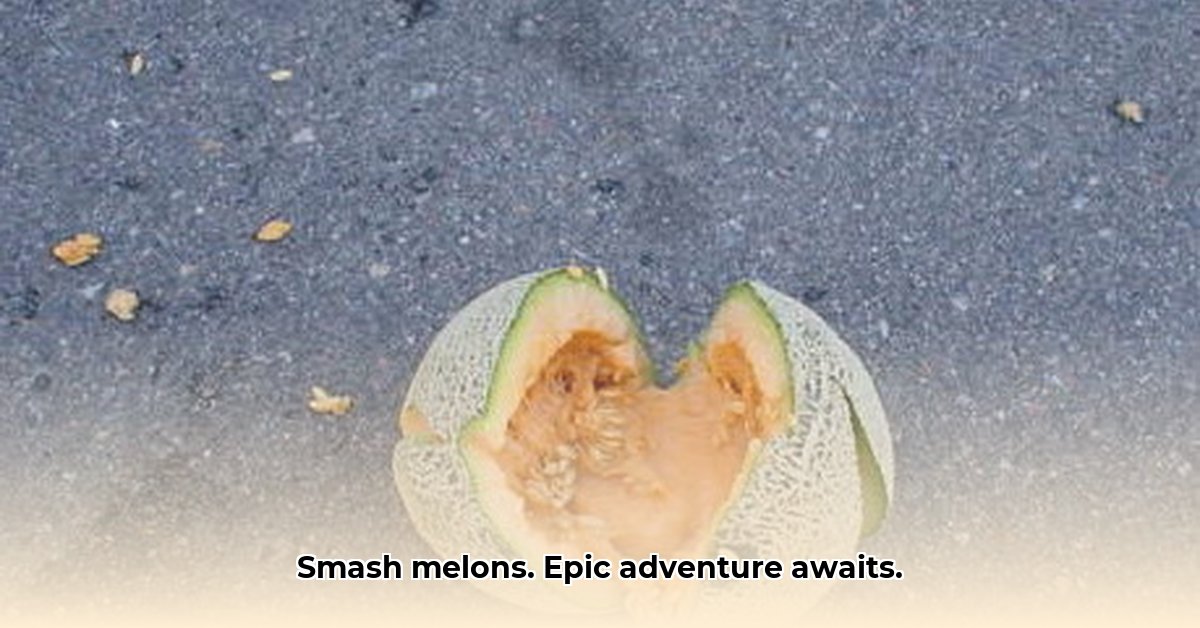
A Comparative Analysis of Melon Smash 3D and Melon Sandbox
This comparative analysis examines two prominent mobile sandbox games: Melon Smash 3D and Melon Sandbox, highlighting their key differences in gameplay mechanics, monetization strategies, and overall market positioning. While sharing a common "Melon" branding, these games cater to distinct player preferences and offer unique experiences within the sandbox genre.
Core Gameplay Differences: Building vs. Destruction
Both Melon Smash 3D and Melon Sandbox provide sandbox environments allowing players to build, customize, and interact with virtual worlds. However, their core gameplay loops diverge significantly.
Melon Smash 3D: Focuses on large-scale construction and exploration. The game boasts "stunning visuals" and advanced building tools enabling the creation of massive structures. Hints of story-driven missions and boss battles suggest a more structured progression compared to its counterpart. However, a lack of detailed information regarding these features currently limits a complete assessment. Furthermore, the absence of modding tools may hinder long-term community engagement and content creation.
Melon Sandbox: Emphasizes physics-based interactions and creative destruction. The game features "ragdoll physics" and a vibrant modding community, fostering user-generated content and collaborative gameplay. This chaotic and playful approach, while appealing to certain players, might deter users seeking a more focused building experience.
Key Differences Summarized:
- Visuals: Melon Smash 3D offers superior graphics; Melon Sandbox prioritizes gameplay over high-fidelity visuals.
- Building: Melon Smash 3D provides advanced building tools for large-scale constructions; Melon Sandbox offers limited building options.
- Physics: Melon Sandbox heavily features physics-based interactions, including ragdoll physics, while Melon Smash 3D does not.
- Modding: Melon Sandbox has a strong modding community; Melon Smash 3D currently lacks this feature.
Monetization and Market Positioning: A Need for Further Data
The shared "Melon" branding suggests potential marketing synergies or a common developer. However, a more thorough analysis of their monetization strategies requires additional data on in-app purchases, player demographics, and revenue models. Further research into their respective player reviews and market penetration within the mobile gaming landscape would significantly enhance our understanding of their competitive positioning. Without access to this data, a definitive comparison of their market success remains incomplete.
Is the shared branding a strategic marketing move or an indicator of shared development resources? More data is needed to determine the full impact.
Future Development and Potential Risks: Charting a Course for Success
Both games possess significant potential for future growth and expansion. However, each faces unique challenges. For Melon Smash 3D, detailed gameplay information and the inclusion of modding capabilities are crucial for sustaining long-term engagement. For Melon Sandbox, managing the potential for violent content through appropriate age ratings and content moderation will be vital.
Potential Future Directions:
- Expansion onto VR/AR platforms
- Cross-platform compatibility
- Integration of esports elements (for Melon Smash 3D)
- Expansion of the "Melon" brand to other related titles
Potential Risk Mitigation:
- Melon Smash 3D: Thorough testing of the building system and regular updates are essential.
- Melon Sandbox: Implementation of robust moderation systems for user-generated content is critical. Compliance with age ratings (ESRB, PEGI) is paramount.
Actionable Insights for Developers and Investors
Prioritize Data Collection: Gathering comprehensive data on player behavior, monetization strategies, and market trends is crucial for informed decision-making.
Community Engagement: Actively engaging with the player community through feedback mechanisms and regular updates is essential for long-term success.
Content Strategy: Develop a well-defined content roadmap and prioritize features based on player feedback and market demand.
Risk Management: Proactively identify and mitigate potential risks, such as user-generated content management (for Melon Sandbox) and gameplay refinement (for Melon Smash 3D).
Explore Monetization Options: Investigate various monetization models, balancing player experience with revenue generation.
In conclusion, Melon Smash 3D and Melon Sandbox represent distinct approaches within the mobile sandbox genre, each appealing to a different segment of players. By understanding their strengths and weaknesses, developers can optimize their strategies for long-term success. A deeper dive into the available market data is crucial to fully assess their competitive landscape and potential.
⭐⭐⭐⭐☆ (4.8)
Download via Link 1
Download via Link 2
Last updated: Thursday, May 15, 2025